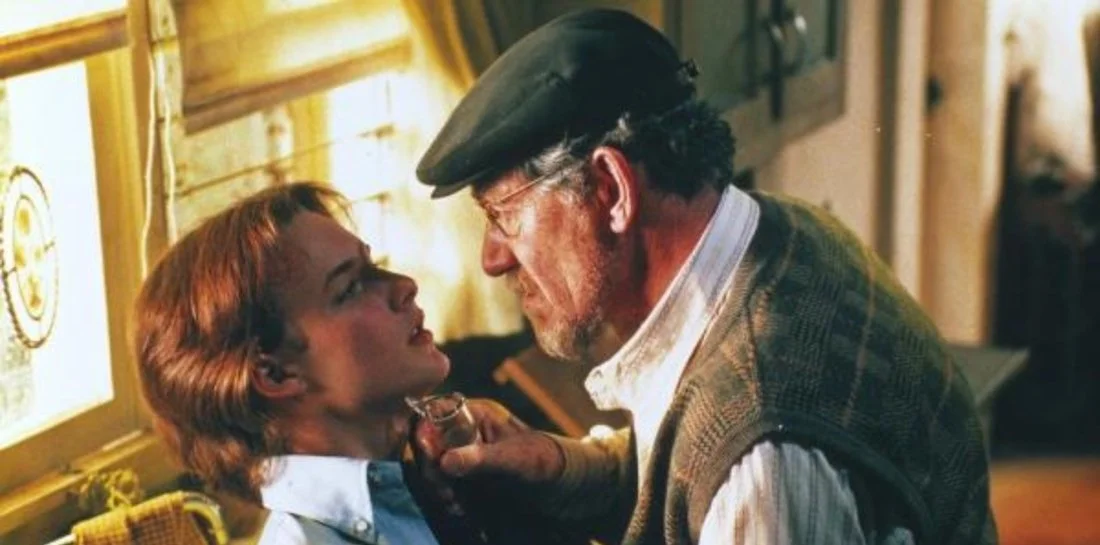The Pumpkin King: APT PUPIL (1998)
I started reading Stephen King at a young age, maybe too young. As a kid I was a voracious reader, still am, and spent most of my time in the library. I sped through the children's department and moved on to the adult section before reaching middle school. Like most horror fans, I made the natural leap from Goosebumps to King novels. Of all his work, the one King story that’s stayed with me, and I find the most terrifying, is Apt Pupil.
Originally published in 1982, it was one of four novellas included in the collection titled Different Seasons.
I don’t remember exactly when I first read it, but I vaguely remember it being not long before the movie adaptation came out in 1998. At that point I would have been in high school, fairly close in age to the sixteen-year-old protagonist, Todd Bowden. Which might be part of why it made such an impact on me.
In both the novella and film, Todd’s obsession with the Holocaust leads him to uncover the identity of Arthur Denker, which is that he’s former Nazi officer and wanted war criminal Kurt Dussander. Instead of turning him in, Todd confronts him with evidence in order to blackmail Dussander. The teenage boy wants to hear stories about exactly what took place in the concentration camps and forces the Nazi to describe them in lurid detail. The tables get turned when Todd’s school grades start to slip. Dussander poses as his grandfather in a meeting with a guidance counselor, using the situation as leverage against Todd.
While watching APT PUPIL, there are moments where you almost forget that the relationship is based on manipulation, deception, and their shared enthusiasm for cruelty. They end up forming a bond that resembles a mentor-like situation, getting to a point where they rely on each. Except their trust in each other is a result of setting up a situation of mutually assured destruction. It might resemble an affectionate bond but is rather simply a display of mutual respect between sociopaths.
What makes it all so terrifying is that it’s one hundred percent real world horror. It doesn’t happen in some alternate universe with imagined monsters, super powered humans, or ancient god-like entities. It’s based in our reality, where the monsters are men who take pleasure in the pain of others. It also feels extra disturbing because it turns all our expectations on their head.
There is no denying that Dussander is a shitty human being, a monster wearing the face of a man.
When he tells Todd stories about the camps, you can tell he wasn’t just following orders, he enjoyed killing and torturing. In fact, talking about his previous crimes reignites the dormant killer inside of him. And yet he’s not actually the main villain of the story.
On the surface, Todd seems like a perfectly average suburban teen, but he’s just as sick and twisted as Dussander—if not worse. As is often the case, nobody would ever suspect such a “good kid.”
While the APT PUPIL film sticks pretty close to the source material, there a few noticeable changes. The movie is set in 1984 instead of ‘74 and only spans a few months rather than years. In addition, it’s not as graphic, including less violence than the novella. However, that does little to lessen the horror. A few wisely chosen moments—Dussander's stories about gas chambers and Todd’s resulting nightmares--gives the viewer enough of picture and allows them to fill in their own frightening details. But much of the credit should go to the performances of the actors in the starring roles. Ian McKellen plays Dussander as equally pathetic and frightening. It’s amazing and creepy how quickly he switches from one to the other. In particular, one scene where Todd orders the former officer to march in a Nazi costume. Brad Renfro was equally impressive, his boy next door good looks combining with AMERICAN PSYCHO vibes to produce something genuinely chilling.
It’s almost a guarantee that any story that includes Nazis is going to be memorable. However, APT PUPIL stands out for its morbidity and how real it feels. It plays on a lot of different fears that we deal with every day. It feels especially relevant considering the current political climate and recent events including instances of domestic terrorism.
On that note I’ll leave you with two fun facts: one, Anthrax’s song “A Skeleton in the Closet” is based on the novella; and two, Family Guy parodied it for the episode “German Guy.”
Author’s Note: Yes, the movie was directed by a monster whose behavior adds a whole other layer to the film’s central relationship and meditations on evil.




